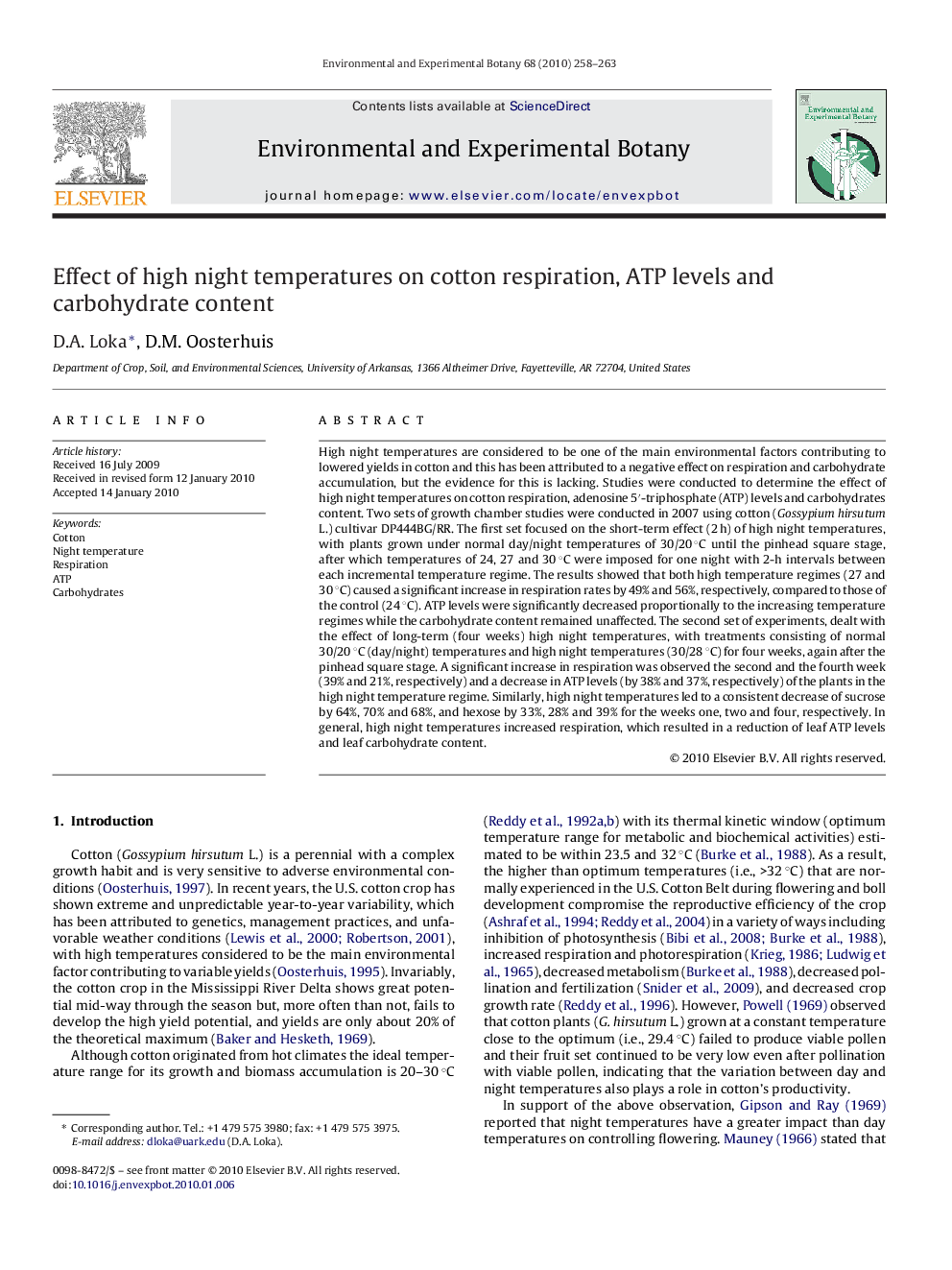| کد مقاله | کد نشریه | سال انتشار | مقاله انگلیسی | نسخه تمام متن |
|---|---|---|---|---|
| 4555377 | 1329255 | 2010 | 6 صفحه PDF | دانلود رایگان |

High night temperatures are considered to be one of the main environmental factors contributing to lowered yields in cotton and this has been attributed to a negative effect on respiration and carbohydrate accumulation, but the evidence for this is lacking. Studies were conducted to determine the effect of high night temperatures on cotton respiration, adenosine 5′-triphosphate (ATP) levels and carbohydrates content. Two sets of growth chamber studies were conducted in 2007 using cotton (Gossypium hirsutum L.) cultivar DP444BG/RR. The first set focused on the short-term effect (2 h) of high night temperatures, with plants grown under normal day/night temperatures of 30/20 °C until the pinhead square stage, after which temperatures of 24, 27 and 30 °C were imposed for one night with 2-h intervals between each incremental temperature regime. The results showed that both high temperature regimes (27 and 30 °C) caused a significant increase in respiration rates by 49% and 56%, respectively, compared to those of the control (24 °C). ATP levels were significantly decreased proportionally to the increasing temperature regimes while the carbohydrate content remained unaffected. The second set of experiments, dealt with the effect of long-term (four weeks) high night temperatures, with treatments consisting of normal 30/20 °C (day/night) temperatures and high night temperatures (30/28 °C) for four weeks, again after the pinhead square stage. A significant increase in respiration was observed the second and the fourth week (39% and 21%, respectively) and a decrease in ATP levels (by 38% and 37%, respectively) of the plants in the high night temperature regime. Similarly, high night temperatures led to a consistent decrease of sucrose by 64%, 70% and 68%, and hexose by 33%, 28% and 39% for the weeks one, two and four, respectively. In general, high night temperatures increased respiration, which resulted in a reduction of leaf ATP levels and leaf carbohydrate content.
Journal: Environmental and Experimental Botany - Volume 68, Issue 3, May 2010, Pages 258–263